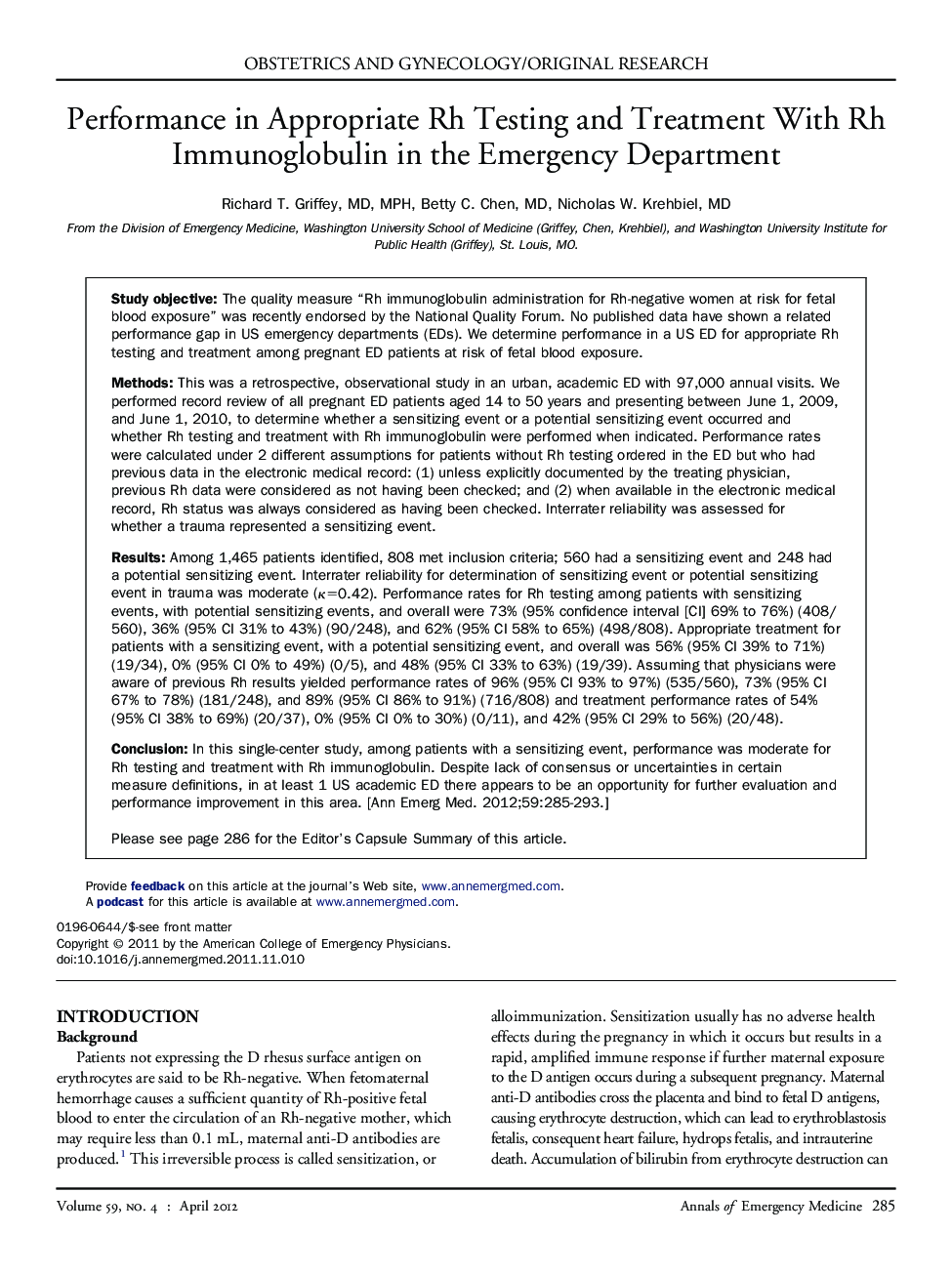| Article ID | Journal | Published Year | Pages | File Type |
|---|---|---|---|---|
| 3231020 | Annals of Emergency Medicine | 2012 | 9 Pages |
Study objectiveThe quality measure “Rh immunoglobulin administration for Rh-negative women at risk for fetal blood exposure” was recently endorsed by the National Quality Forum. No published data have shown a related performance gap in US emergency departments (EDs). We determine performance in a US ED for appropriate Rh testing and treatment among pregnant ED patients at risk of fetal blood exposure.MethodsThis was a retrospective, observational study in an urban, academic ED with 97,000 annual visits. We performed record review of all pregnant ED patients aged 14 to 50 years and presenting between June 1, 2009, and June 1, 2010, to determine whether a sensitizing event or a potential sensitizing event occurred and whether Rh testing and treatment with Rh immunoglobulin were performed when indicated. Performance rates were calculated under 2 different assumptions for patients without Rh testing ordered in the ED but who had previous data in the electronic medical record: (1) unless explicitly documented by the treating physician, previous Rh data were considered as not having been checked; and (2) when available in the electronic medical record, Rh status was always considered as having been checked. Interrater reliability was assessed for whether a trauma represented a sensitizing event.ResultsAmong 1,465 patients identified, 808 met inclusion criteria; 560 had a sensitizing event and 248 had a potential sensitizing event. Interrater reliability for determination of sensitizing event or potential sensitizing event in trauma was moderate (κ=0.42). Performance rates for Rh testing among patients with sensitizing events, with potential sensitizing events, and overall were 73% (95% confidence interval [CI] 69% to 76%) (408/560), 36% (95% CI 31% to 43%) (90/248), and 62% (95% CI 58% to 65%) (498/808). Appropriate treatment for patients with a sensitizing event, with a potential sensitizing event, and overall was 56% (95% CI 39% to 71%) (19/34), 0% (95% CI 0% to 49%) (0/5), and 48% (95% CI 33% to 63%) (19/39). Assuming that physicians were aware of previous Rh results yielded performance rates of 96% (95% CI 93% to 97%) (535/560), 73% (95% CI 67% to 78%) (181/248), and 89% (95% CI 86% to 91%) (716/808) and treatment performance rates of 54% (95% CI 38% to 69%) (20/37), 0% (95% CI 0% to 30%) (0/11), and 42% (95% CI 29% to 56%) (20/48).ConclusionIn this single-center study, among patients with a sensitizing event, performance was moderate for Rh testing and treatment with Rh immunoglobulin. Despite lack of consensus or uncertainties in certain measure definitions, in at least 1 US academic ED there appears to be an opportunity for further evaluation and performance improvement in this area.
